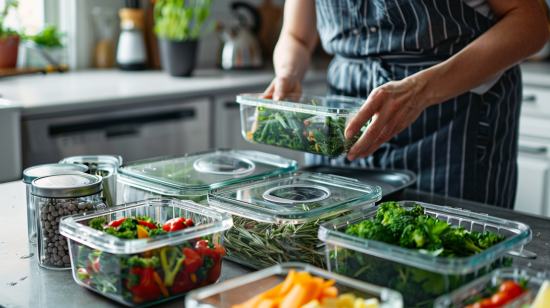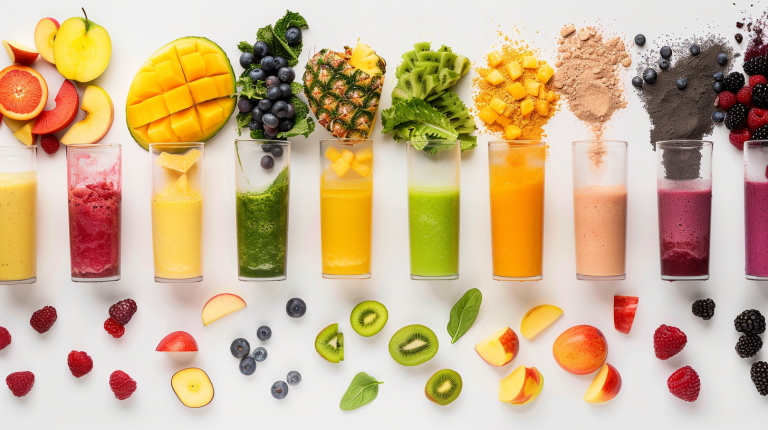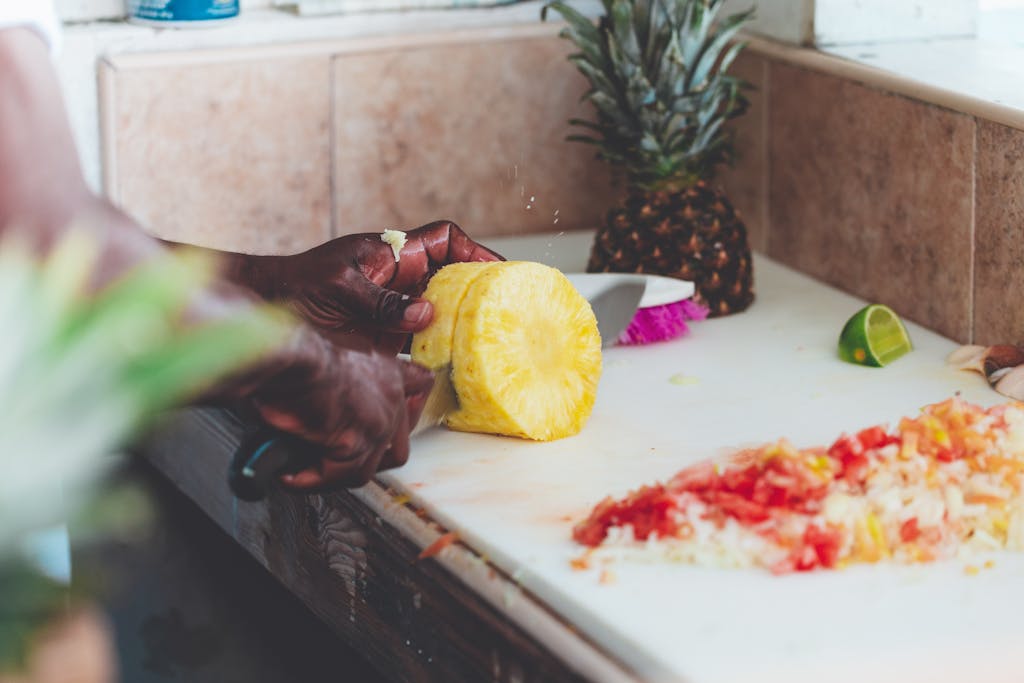Mastering Meal Prep: Simple Strategies for a Healthier Diet

Introduction
Meal prep has become a buzzword in the world of healthy eating, and for good reason. It’s not just about saving time; it’s a game-changer in making healthier choices throughout the week. In this guide, we’ll delve into the art of mastering meal prep with simple yet effective strategies that can transform your relationship with food and pave the way for a healthier diet.
Benefits of Meal Prep
- Time-saving
Meal prep is a lifesaver for busy individuals. By dedicating a few hours to prep at the start of the week, you can save countless hours of cooking and cleaning during hectic weekdays. Imagine coming home to a fridge stocked with ready-to-eat meals – it’s like having your own personal chef! - Cost-effective
One of the underrated benefits of meal prep is its cost-effectiveness. When you plan your meals ahead and buy ingredients in bulk, you not only save money but also reduce food waste. No more last-minute grocery runs or impulse takeout orders that dent your wallet! - Healthier choices
With meal prep, you’re in control of what goes into your meals. It’s a fantastic way to ensure you’re getting a balanced diet with the right nutrients. From portion-controlled servings to incorporating more fruits, veggies, and lean proteins, meal prep sets the stage for healthier eating habits.
Getting Started with Meal Prep
- Planning
The key to successful meal prep is planning. Start by selecting recipes that you enjoy and that are easy to prepare in batches. Make a shopping list based on these recipes, taking into account pantry staples and fresh ingredients you’ll need. Set aside time in your schedule for meal prep sessions – a Sunday afternoon works well for many people. - Grocery shopping
Efficient grocery shopping is a crucial part of meal prep. Stick to your list to avoid impulse buys, and consider shopping at farmers’ markets or bulk stores for better deals on fresh produce and pantry staples. Look for sales and discounts on items you use frequently, and don’t forget to check expiration dates to minimize waste. - Kitchen essentials
To streamline your meal prep process, invest in a few kitchen essentials. Stock up on reusable containers in various sizes for storing prepped meals. Meal prep trays or bento boxes are great for portioning out meals. Other useful tools include a good knife set, cutting boards, and kitchen gadgets like a slow cooker or Instant Pot for easy cooking.
Preparation Techniques
Once you have your plan, groceries, and kitchen essentials ready, it’s time to dive into preparation techniques that make meal prep efficient and enjoyable.
- Batch cooking: This technique involves cooking larger quantities of food at once and then portioning it out for multiple meals. It’s perfect for busy weekdays when you need quick and easy meals.
- Portion control: Use measuring cups or a food scale to ensure accurate portion sizes. This helps in controlling calorie intake and maintaining a balanced diet.
- Ingredient versatility: Choose versatile ingredients that can be used in multiple dishes. For example, roasted vegetables can be added to salads, wraps, or served as a side dish.
Healthy Meal Prep Ideas

Meal prep doesn’t mean boring or bland meals. Here are some healthy and delicious meal ideas to inspire your meal prep sessions:
- Breakfast options: Overnight oats, egg muffins, chia seed pudding, or yogurt parfaits with fruits and nuts.
- Lunch and dinner recipes: Grilled chicken or tofu with quinoa and roasted vegetables, stir-fried veggies with brown rice, lentil soup, or grilled fish tacos with coleslaw.
- Snack suggestions: Pre-cut veggies with hummus, Greek yogurt with berries, homemade energy bars, or fruit salad cups.
Here are some more meal prep ideas focusing on whole ingredients without specific recipes:
- Grain Bowls: Create grain bowls with a base of whole grains like quinoa, brown rice, or farro. Top with a variety of roasted or sautéed vegetables, lean proteins such as grilled chicken or tofu, and a flavorful dressing or sauce.
- Vegetable Stir-Fry: Prepare a batch of vegetable stir-fry using a colorful mix of bell peppers, broccoli, carrots, snap peas, and mushrooms. Season with garlic, ginger, soy sauce, and a touch of honey or maple syrup for a balanced and savory dish.
- Bean Salads: Make bean salads using a combination of beans like chickpeas, black beans, and kidney beans. Add diced vegetables, fresh herbs, a squeeze of lemon or lime juice, and a drizzle of olive oil for a protein-packed and fiber-rich meal.
- Mason Jar Salads: Layer mason jars with hearty ingredients like cooked quinoa or couscous, chopped greens, cherry tomatoes, cucumbers, avocado slices, and grilled shrimp or salmon. Seal with a lid and store dressing separately for a convenient and fresh salad option.
- Roasted Veggie Bowls: Roast a batch of seasonal vegetables such as sweet potatoes, Brussels sprouts, cauliflower, and butternut squash. Serve over a bed of mixed greens or grains like barley or bulgur for a flavorful and nutrient-rich bowl.
- Egg Muffins: Whip up a batch of egg muffins by mixing beaten eggs with chopped vegetables like spinach, bell peppers, onions, and mushrooms. Pour into muffin tins and bake until set for a protein-packed and portable breakfast option.
- Stuffed Bell Peppers: Fill bell peppers with a mixture of cooked quinoa, ground turkey or beef, black beans, corn, diced tomatoes, and spices like cumin and chili powder. Bake until peppers are tender for a satisfying and veggie-packed meal.
- Homemade Soups: Prepare large batches of homemade soups such as lentil soup, minestrone, or chicken and vegetable soup. Portion into containers for easy reheating and enjoy with a side of whole grain bread or crackers.
Here are some meal prep ideas focusing on diverse protein sources:
- Grilled Chicken Breast with Quinoa and Steamed Broccoli: Marinate chicken breasts in a mix of olive oil, lemon juice, garlic, and herbs. Grill until cooked through. Serve with quinoa cooked in broth for added flavor and steamed broccoli. Portion into containers for a protein-packed meal.
- Vegetarian Chili with Beans: Make a hearty vegetarian chili using a variety of beans like kidney beans, black beans, and chickpeas. Add diced tomatoes, onions, bell peppers, corn, and spices. Simmer until flavors meld. Serve with a dollop of Greek yogurt or avocado slices.
- Salmon Fillets with Roasted Vegetables: Season salmon fillets with olive oil, lemon zest, and dill. Bake until flaky. Roast a mix of vegetables like sweet potatoes, Brussels sprouts, and carrots with olive oil, salt, and pepper. Pair the salmon and roasted veggies for a nutritious meal.
- Tofu Stir-Fry with Brown Rice: Cube tofu and marinate in a soy sauce-based mixture. Sauté with mixed vegetables like bell peppers, broccoli, and snap peas. Serve over brown rice cooked with vegetable broth for added flavor.
- Egg Salad Wraps: Hard-boil eggs and chop. Mix with Greek yogurt, mustard, celery, and green onions. Spread on whole grain wraps and add lettuce leaves. Roll up and slice into portions for a protein-rich lunch option.
- Turkey and Quinoa Stuffed Bell Peppers: Cook quinoa and mix with cooked ground turkey, diced tomatoes, black beans, corn, and spices like cumin and paprika. Stuff bell peppers with the mixture and bake until peppers are tender. Serve with a side of salsa.
- Chickpea Salad with Avocado Dressing: Combine cooked chickpeas with chopped cucumbers, tomatoes, red onions, and parsley. Blend avocado, lime juice, garlic, and olive oil for a creamy dressing. Toss the salad with the dressing and divide into containers.
- Shrimp and Veggie Skewers with Couscous: Thread shrimp, cherry tomatoes, bell peppers, and zucchini onto skewers. Grill until shrimp are pink and vegetables are tender. Serve with lemon herb couscous for a Mediterranean-inspired meal prep option.
Storage and Safety

Proper storage is key to maintaining the freshness and safety of your prepped meals.
- Proper storage: Store prepped meals in airtight containers in the fridge for up to 3-4 days or freeze them for longer shelf life.
- Labeling and organization: Label containers with the date and contents to track freshness. Organize meals by type (e.g., breakfast, lunch, dinner) for easy access.
- Food safety tips: Follow food safety guidelines, such as thawing frozen meals in the fridge, reheating leftovers to the proper temperature, and discarding any expired or spoiled food.
Time-Saving Tips
Streamline your meal prep process with these time-saving strategies:
- Prep ahead: Chop veggies, marinate proteins, and cook grains or beans in advance to speed up meal assembly.
- Use multitasking: Utilize oven space by roasting vegetables while baking proteins, or cook multiple components simultaneously on the stovetop.
- One-pot meals: Simplify cleanup and cooking by preparing meals that can be cooked in one pot or pan, like stir-fries, soups, or casseroles.
- Freezer-friendly meals: Prepare freezer-friendly meals like soups, stews, or casseroles that can be stored and reheated for quick meals later.
Overcoming Challenges
Address common meal prep challenges and stay on track with these tips:
- Variety: Keep meals interesting by rotating recipes and trying new ingredients or cuisines.
- Storage space: Maximize fridge and freezer space by using stackable containers and optimizing shelf organization.
- Consistency: Set aside dedicated time each week for meal prep to maintain consistency and make it a sustainable habit.
Celebrating Success
Don’t forget to celebrate your meal prep achievements:
- Track progress: Keep a meal prep journal or use an app to track meals, recipes, and progress towards your health goals.
- Share experiences: Share your meal prep journey, recipes, and tips with friends, family, or online communities for inspiration and support.
- Reward yourself: Treat yourself to a favorite meal or activity as a reward for sticking to your meal prep routine and achieving your health goals.
Conclusion
Congratulations on starting this journey into mastering meal prep! By now, you’ve learned valuable strategies, and tips to revolutionize your approach. Meal prep isn’t just about convenience; it’s a powerful tool for crafting a healthier lifestyle and reclaiming control over your diet.
As you embark on your meal prep adventures, remember these key takeaways:
- Empowerment through Planning: Meal prep empowers you to make mindful choices about what you eat. Planning your meals ahead of time not only saves you time and money but also puts you in the driver’s seat of your nutritional journey.
- Nourishment and Variety: Explore the endless possibilities of meal prep by experimenting with new recipes, ingredients, and flavors. Keep your meals exciting and satisfying to maintain long-term success.
- Consistency and Progress: Consistency is key to reaping the full benefits of meal prep. Stick to your meal prep routine, track your progress, and celebrate your achievements along the way.
- Community and Support: Share your meal prep experiences with others. Whether it’s swapping recipes with friends, joining online communities, or seeking support from loved ones, a supportive network can keep you motivated and inspired.
- Self-Care and Balance: Remember that meal prep is a tool for self-care and balance. It’s okay to indulge occasionally and treat yourself while staying mindful of your overall health goals.
We hope this guide has equipped you with the knowledge and motivation to embark on a fulfilling meal prep journey. Here’s to healthier meals, happier moments, and a life well-nourished through the art of mastering meal prep!






